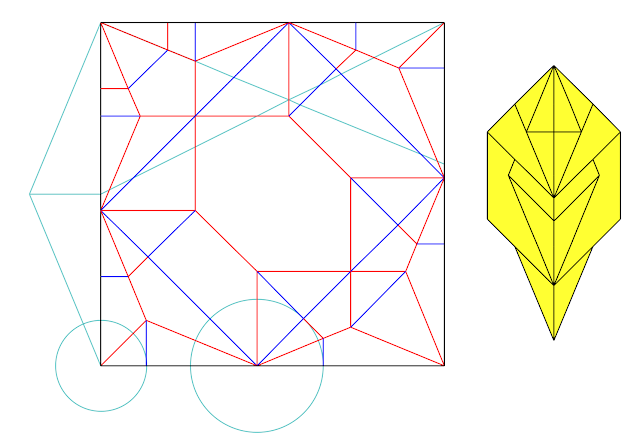A simple crocodile foldable with any regular paper in 15 minutes.
Design
A friend was moving away to another city, so I wanted to make origami as a little gift.
I had only one day. During lunch I thought about how to make a crocodile. There is a structure suitable for 4 legged critter with long tail and snout: blintzed pig base. Once home, I tried it out and came up with this arrangement.
 |
| Blintzed pig base |
The extra flaps in front are made into color changed angry-eyes. The whole structure works, but I wished to have all the legs to be the exact same length. This can be achieved by altering the ratio of the pig base. So what's the ratio? Either formulate the equation and solve it, or just draw it on Oriedita and calculate later. I did the latter.
 |
| The reference is based on \(1 + \sqrt{2} : 2\) |
Unfortunately this makes the snout and tail much shorter. I had a wacky idea to swap the ratio and see what happened. The snout and tail are now longer, but the forelegs are shorter than the hind legs.
 |
| Same reference, just swapped the width and height of the pig base |
Actually I liked it. With some simple shaping, this can pass as a simple crocodile. I proceed to grab a 15 cm kami and finished the final fold. As finishing touch, we can sink one edge in the bottom, form a slot, and insert the other edge there to lock the model.
 |
| Lock on the belly |
The next day I drew the crease pattern and realized that the reference is not fully nice. There is a tiny misalignment on the connection between eyes and forelegs, which wasn't noticeable on physical paper. To fully eliminate it, the reference should be based on \(2 + \sqrt{2} : 4\) like what is shown on top of this post.
 |
| Circled region shows misalignment |


Comments
Post a Comment